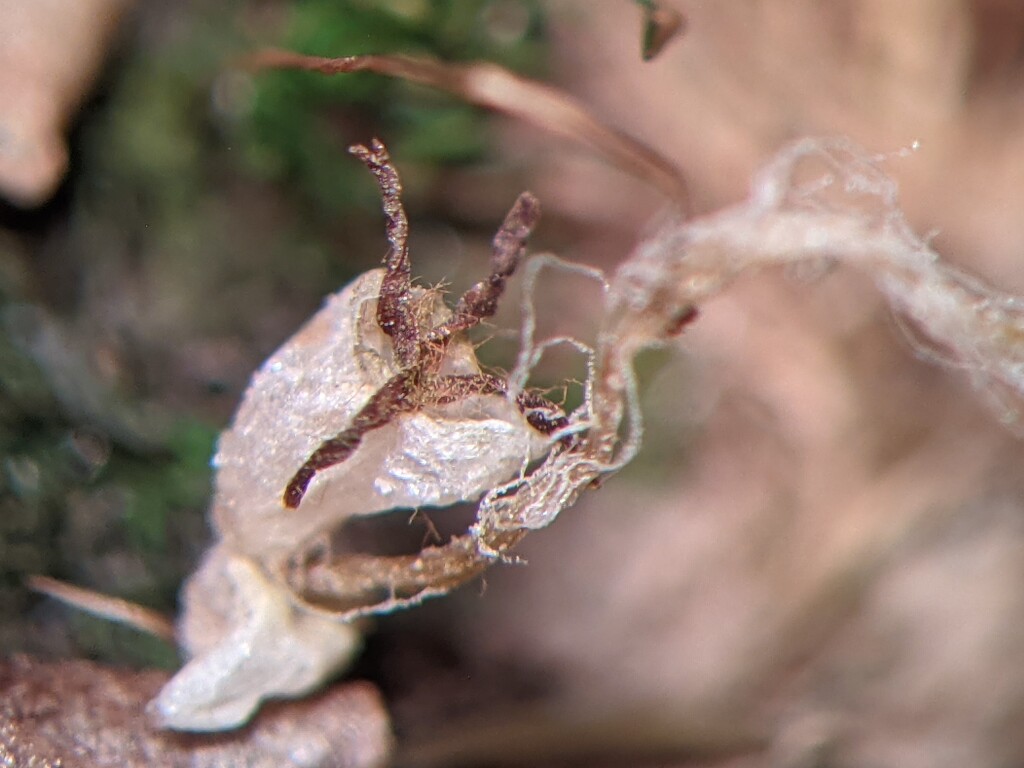Lunulariaceae
Perennial, terrestrial, dioicous with female and male plants of similar size. Disc-shaped gemmae regularly produced in crescent-shaped gemmae-cups on adaxial thallus. Plants comprising an irregularly furcate thallus, sometimes innovating at apex. Thallus differentiated into tissue composed of walls of cells that bound air chambers adaxial to solid tissue dedicated to storage, bright or yellowish green, glabrous, without adaxial grooves; margins flat to undulate; air chambers floored by erect branched photosynthetic filaments, in a single layer, sometimes faintly defined by polygonal boundaries on adaxial surface, much thinner than underlying storage tissue; adaxial epidermal cells hyaline, thin- or thick-walled to collenchymatous; air pores simple, surrounded by 3–5 rings of curved cells. Abaxial scales present, crescentic, in 2 rows, with a single round or reniform appendage, hyaline. Oil cells present in abaxial scales and scattered through all thallus tissue. Rhizoids present, without and with internal peg-like thickenings, between abaxial scales. Antheridia sunken in flask-shaped cavities in cushion-like antheridiophore originally in sinus at growing apex, but displaced to thallus margins upon further growth; antheridiophore elliptic to reniform, black, with a raised wing at its margin, not surrounded by scales. Sporophytes eventually elevated above thallus on archegoniophore; archegoniophore originally in sinus at growing apex, but displaced to thallus margins upon further growth, originally domed, white, sheathed in scales, slightly sunken in depression with distinct rim, after fertilisation forming a stalk; stalk transparent, with scattered white filaments, with scales at base, without rhizoid furrows and air chambers, terminated by four involucres forming a cross and each enclosing one or two sporophytes; involucres tubular, entire; pseudoperianth absent. Seta elongating prior to spore dispersal, exposing capsule beyond involucre, developing on globose foot. Capsule dehiscence by 4 valves dividing to base, unistratose; elaters present, bispiral. Spores globular, densely granulate, light brown, shed singly.
One genus and species, Lunularia cruciata (L.) Dumort., occurring in the Americas, Europe and the Mediterranean region, Asia, central and southern Africa, New Zealand and Australia.
 Spinning
Spinning